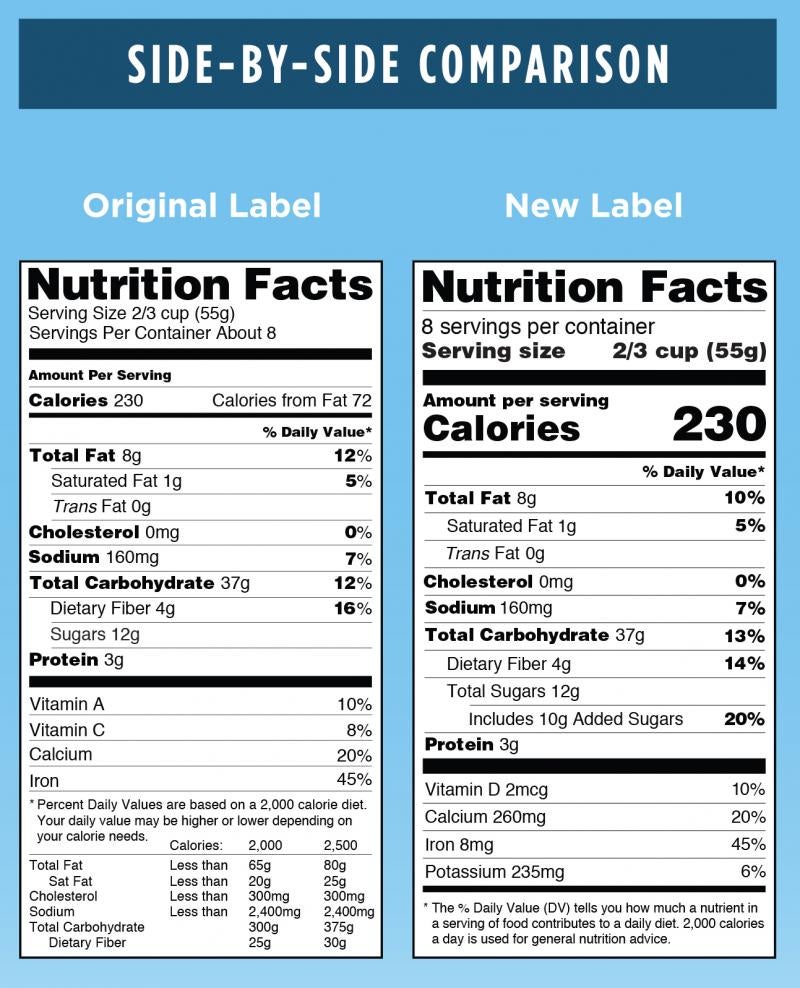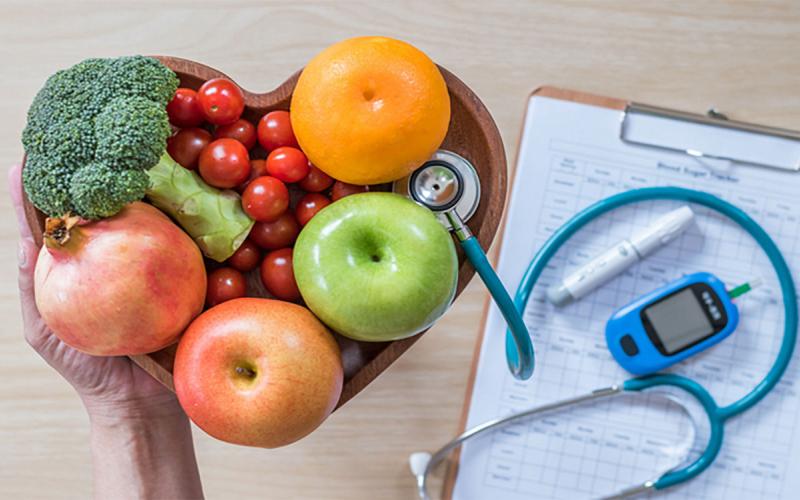Written collaboratively by Jennifer Folliard, Curtis Braun and Samantha Kratovil.
The Nutrition Facts Panel, commonly referred to as the food label, that we see on all packaged foods, will be updated on all food items by 2021. The basic design of the label will be the same but there will be more information which should make it easier for consumers to make better informed food choices.
In Spring of 2016, the U.S. Food and Drug Administration announced the new food label design which reflects the current body of nutrition and diet evidence-based recommendations, including the link between dietary patterns and chronic diseases such as obesity and heart disease. The new food label will provide information and education to help the consumer better understand the foods they are eating and how it might impact their health.
New Food Label Design

What to expect in the new food label:
- Type font is larger to highlight the servings per container, serving size and calories.
- Serving size of the product is updated to what a “typical American would eat”.
- Serving size and calories are bolded to draw your eye to this important information.
- Sodium, dietary fiber and vitamin D have updated daily values based on new scientific evidence.
- Calories from fat category is removed because there is more emphasis on type of fat verse amount of fat.
- There is a new category under Total Sugars called “Added Sugars”.
- Vitamin D and potassium content will be required on the new label, while vitamins A and C content will become voluntary information.
Some companies have started rolling out the new food label and we can expect to see more products with the new food label leading up to the 2021 deadline. Companies still have time, as the rule requires larger food companies, with $10 million or more in annual sales, to comply by January 1, 2020; while smaller food companies, with less than $10 million in annual food sales, have until January 1, 2021 to comply.
How SDSU Extension Can Help
SDSU Extension has invested in Software that is compliant with the new labeling regulations. SDSU will charge $10 to create a label which will include an ingredient declaration statement and nutrition facts panel. To ensure that your label is in compliance, SDSU Extension would advise that your labels meet the FDA labeling requirements.
Reference
Changes to the Nutrition Facts Label. Fda.gov. Published 2019. Accessed February 7, 2019.


